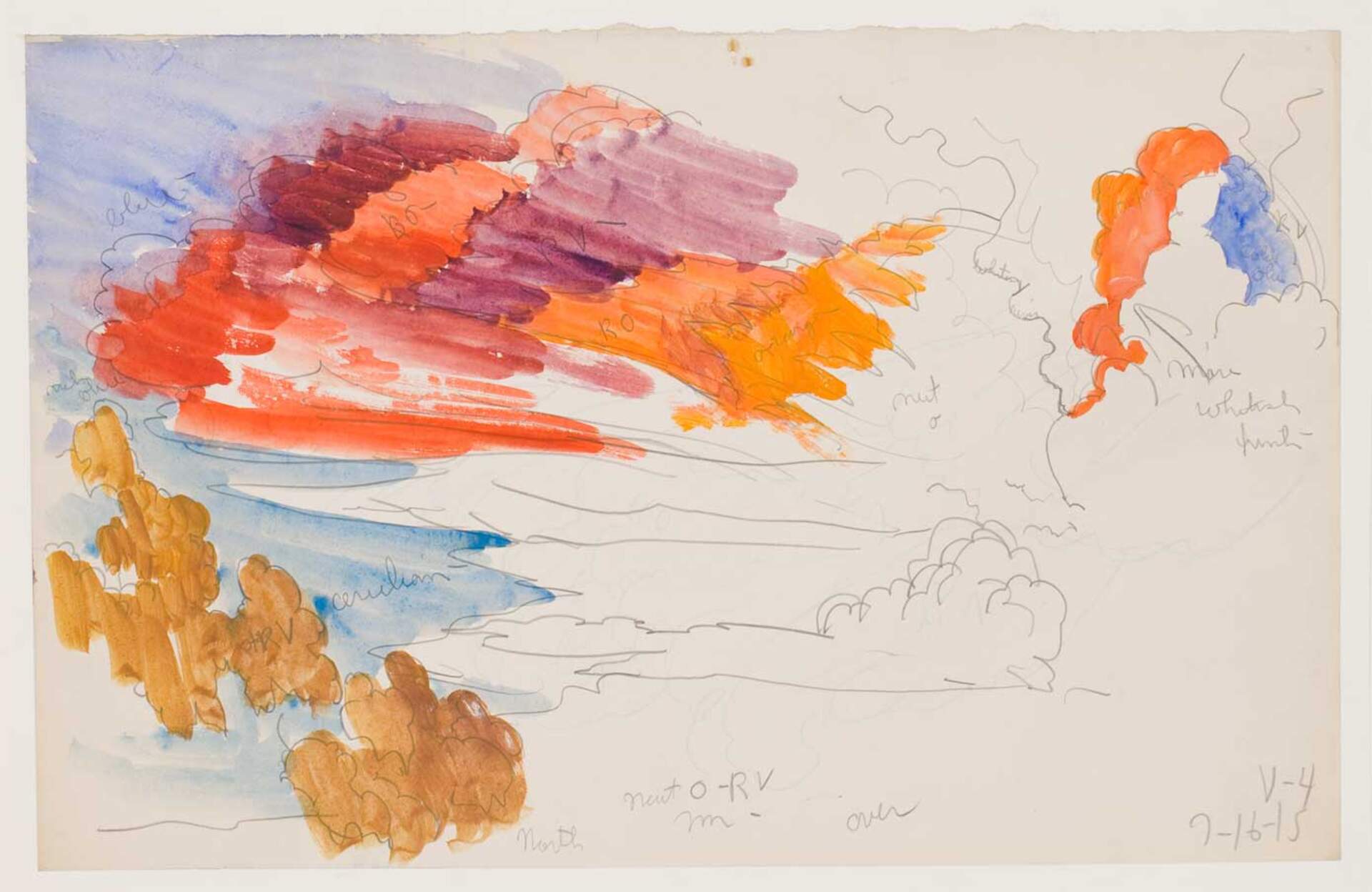Charles E. Burchfield (1893-1967)Flaming Orange Northern Sky at Sunset/V-4
July, 16, 1915
watercolor and grahite on paper
11 x 17 inches
Burchfield Penney Art Center, Charles E. Burchfield Foundation Archives, Gift of the Charles E. Burchfield Foundation, 2006
The colors in this study appear vivid but is realistic. Normally the shorter wavelengths of light (yellow and blue) are more easily scattered than the longer wavelengths of visible light (oranges and reds), thus the sky appears blue and the sun yellow during the day. When the sun is low on the horizon the sun’s light must pass through a thicker atmosphere, thus we witness colors of orange and red with the rising or setting of the sun. The colors appear higher in the sky when the sun is very low or even below the horizon. The mixing of long wavelength colors provide for some vivid colors.
Sunrise and sunset colors can be enhanced by the dust from volcanic eruptions. Simply put, the aerosols provide more obstructions and more scattering. The result is an enhanced multihued effect. After the recent eruption of a volcano in Iceland, sunsets in parts of Europe were described as having “unbelievable vivid colors”.
On May 22, 1915 Lassen Peak (in California) exploded in what was known as the “Great Eruption of 1915”, the most powerful eruption in a series of eruptions between 1914 and 1917. Until Mount St. Helens erupted in 1980, Mount Lassen was the only active volcano in the Continental United States. It is possible that the vivid multihued colors shown in this study was, in part, influenced by a volcanic eruption in California.
